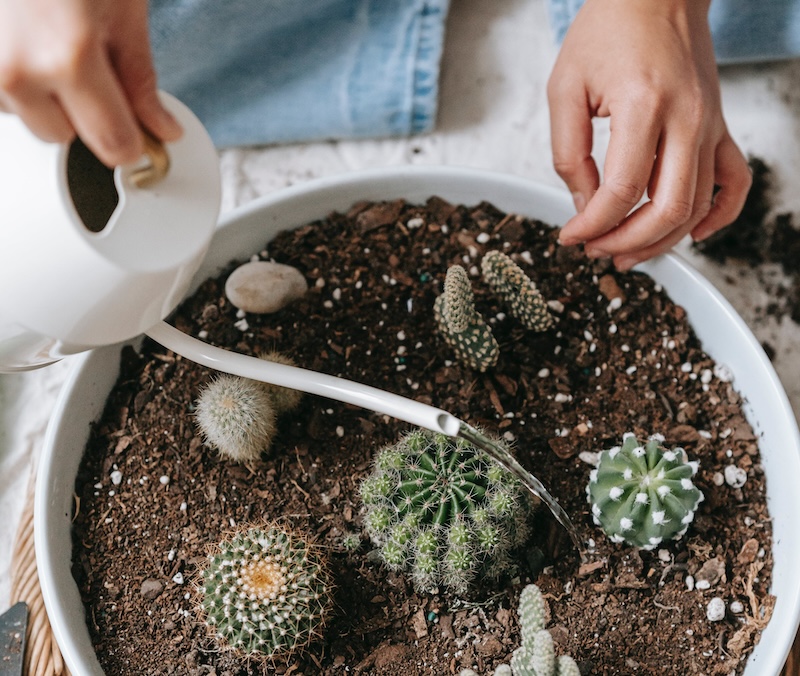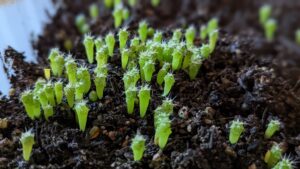When you think of caring for plants, watering is often the first task that comes to mind. But how do you water a cactus without drowning it? The unique nature of cacti, with their ability to thrive in arid landscapes, poses a fascinating challenge to plant enthusiasts. Determining the optimal watering strategy for these resilient botanicals is crucial. Here’s a comprehensive guide for properly watering your cactus plant, ensuring it remains healthy and vibrant.
Understanding the Natural Habitat of Cacti
Cacti are native to some of the most arid regions on the planet, including deserts and scrublands. Their evolution in these environments has equipped them with extraordinary adaptations for water conservation. As a result, they are remarkably different from traditional houseplants like ferns or peace lilies. Understanding their natural habitat is essential for replicating the right conditions in your home.
In their native settings, cacti can endure long periods without rain. However, when they do receive water, it falls in heavy bursts during the monsoon season. This leads to a distinct growth pattern where cacti rapidly absorb moisture, storing it in their fleshy tissues. With this insight, the challenge of watering becomes clearer: the goal is to mirror these natural conditions as closely as possible.
The Significance of Soil Composition
Before delving into watering techniques, it is essential to discuss the importance of your cactus’s soil. Standard potting soil retains a lot of moisture, which can be detrimental to cacti. Instead, a well-draining soil mix is paramount. Look for soil specifically designed for cacti or succulent plants, enriched with materials like sand, perlite, or pumice to enhance drainage.
By fostering excellent drainage, you create a conducive environment that prevents root rot—a common issue with cacti that stems from excessive moisture. A mix of approximately 50% potting soil to 50% coarse materials generally works well. An adequately composed soil not only ensures that water flows freely but also allows the plant’s roots to breathe, which is equally vital for its overall health.
The Art of Watering: Timing is Everything
Knowing when to water your cactus is as critical as knowing how to do it. Unlike many plants, cacti don’t require frequent watering. The frequency can vary significantly depending on the season and environment. During the growing season—typically spring and summer—cacti may need watering every 2-4 weeks. However, in fall and winter, they enter dormancy and much less moisture is required, potentially extending the interval to 6-8 weeks.
One of the primary indicators of when to water is observing the soil. A finger test can be quite telling: insert a finger about an inch into the soil. If it feels dry, it is time to provide water. If it still feels moist, it’s advisable to wait. This simple yet effective technique can help mitigate the risk of overwatering—a common pitfall for many cactus caretakers.
Watering Techniques: The Right Method Matters
Once you’ve determined that it’s time to water, the next step is adopting the right technique. Overhead watering is often discouraged for cacti as it can cause water to pool near the base, leading to rot. Instead, use a watering can to gently pour water directly onto the soil, ensuring that it penetrates the root zone.
For cacti in pots, an excellent method is the soak-and-dry approach. Place your cactus pot in a basin of water and let it absorb moisture from the bottom through the drainage holes. This method encourages healthy root growth and ensures the plant receives adequate hydration without exceeding its tolerance levels.
Pay close attention to the quantity of water you’re administering. A thorough soaking is ideal, but it’s crucial to ensure that excess water drains away completely. Watering should be a thoughtful process, not a haphazard one.
Watching for Signs of Distress
Being attentive to your cactus’s health can also provide insight into your watering regimen. Signs of overwatering can include yellowing or mushy tissues, while underwatering might manifest as shriveling or browning. Mitigating these issues often involves adjusting your watering schedule and fine-tuning your technique.
In summary, mastering the art of watering a cactus is about understanding its unique requirements and respecting its natural habitat. With the right soil, timing, and technique, you can create an environment where your cactus can thrive.
With the excitement of nurturing these beautiful and resilient plants comes an important reminder: cacti are not indestructible! By approaching their care with thoughtful consideration, you can enjoy the many rewards they bring into your home. Happy planting!





Leave a Comment